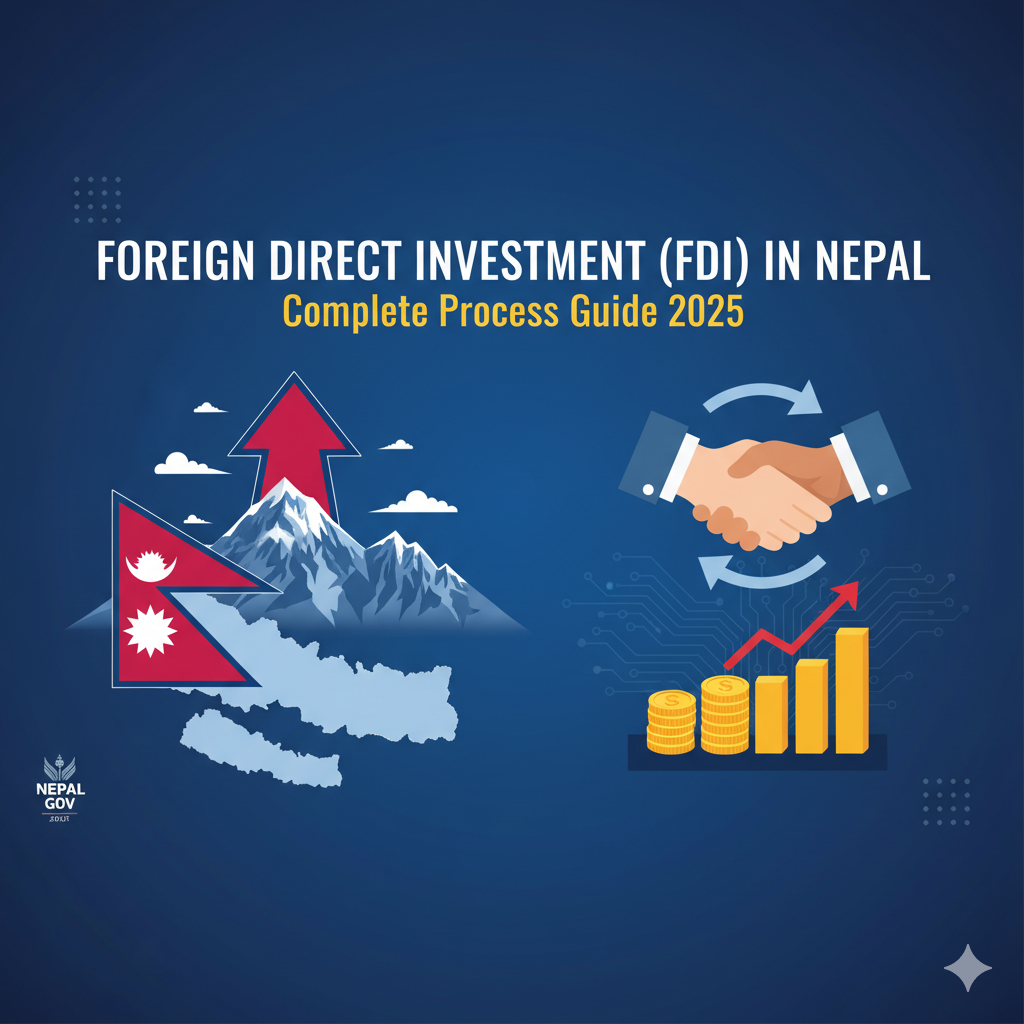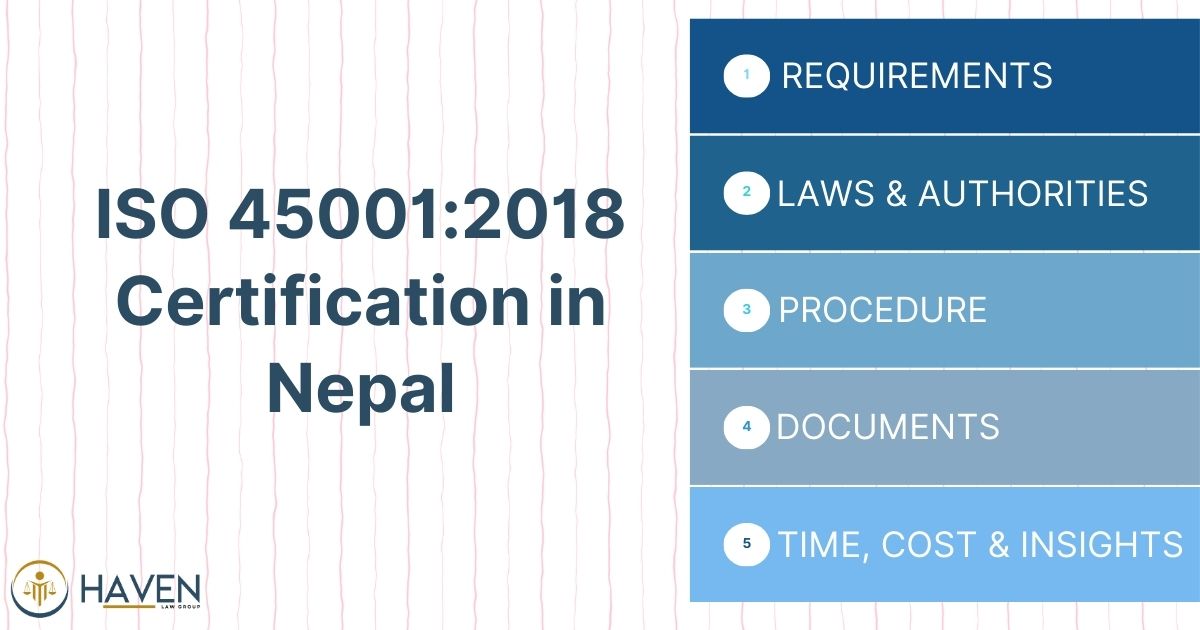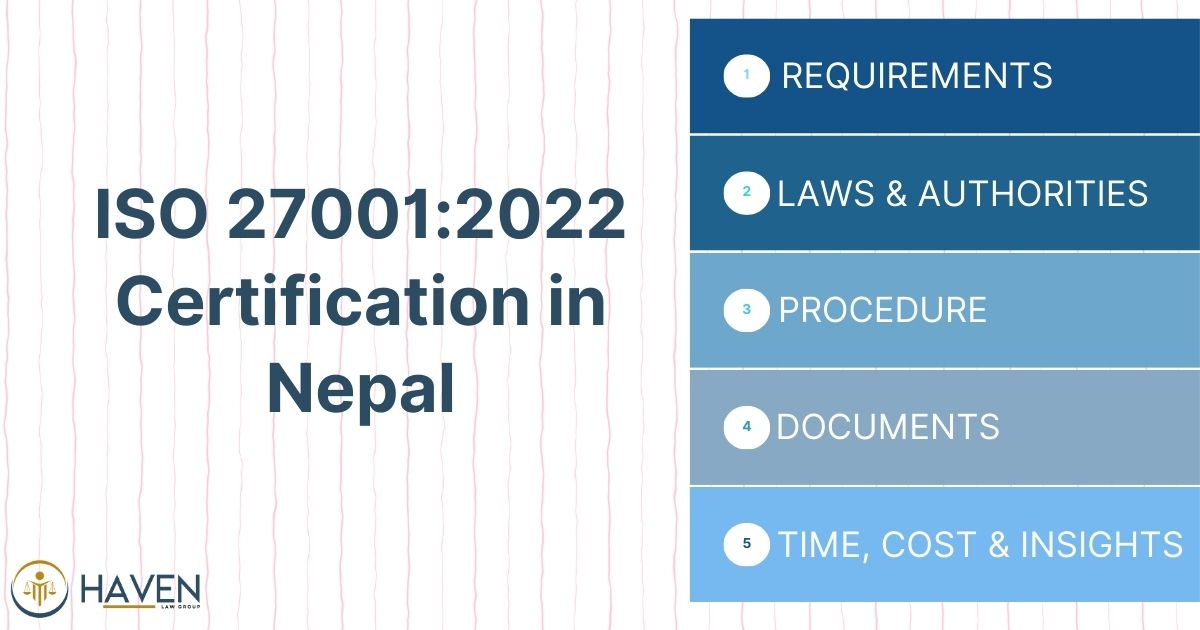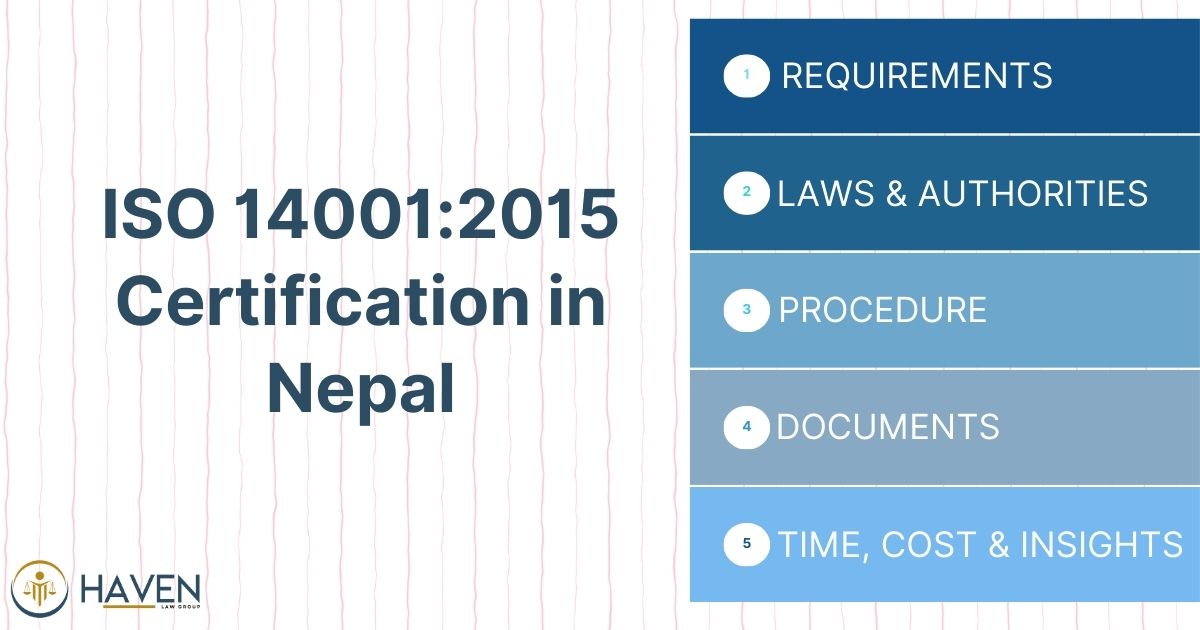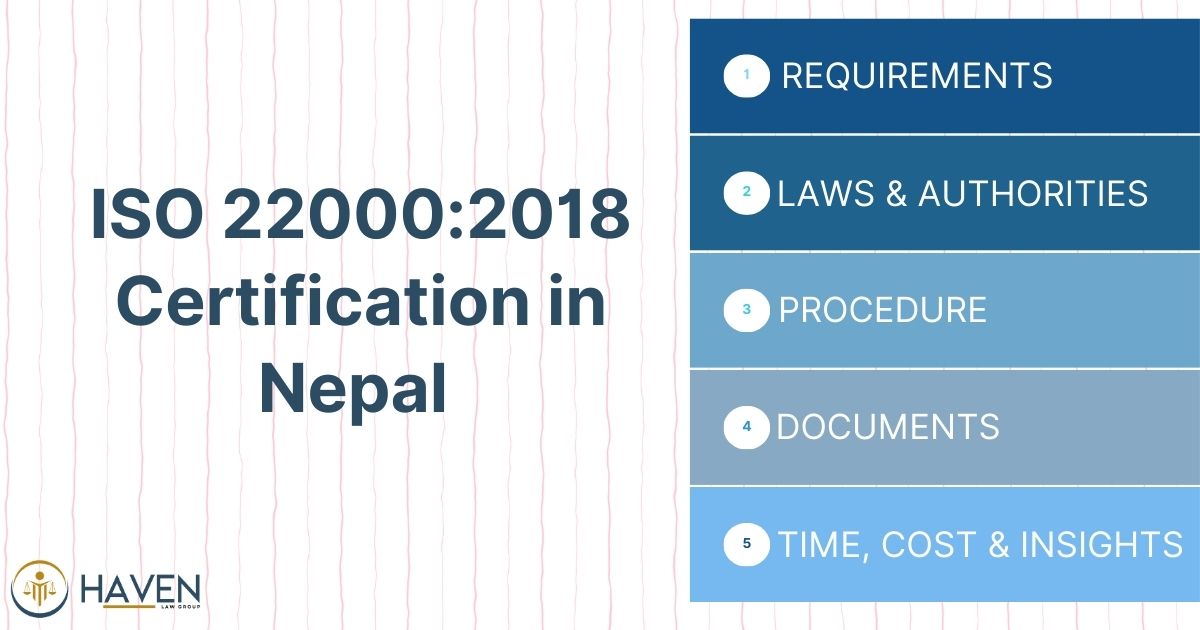Introduction
In today’s rapidly changing business environment, sustainability is no longer optional—it is a necessity. Companies across the globe, including in Nepal, are striving to balance growth with environmental responsibility. ISO 14001:2015 Certification in Nepal is one of the most effective tools for businesses to demonstrate their commitment to environmental management.
This international standard helps organizations establish a systematic framework to protect the environment, reduce pollution, comply with environmental laws, and continuously improve their operations. For Nepali businesses seeking global recognition and sustainable growth, ISO 14001:2015 provides credibility, competitiveness, and compliance advantages.
In this article, we will cover everything you need to know about ISO 14001:2015 Certification in Nepal, including its importance, requirements, process, benefits, cost, challenges, and frequently asked questions.
What is ISO 14001:2015?
ISO 14001:2015 is the international standard for Environmental Management Systems (EMS), published by the International Organization for Standardization (ISO).
- It provides a framework for organizations to identify, manage, monitor, and control environmental issues in a holistic manner.
- The standard is based on the Plan-Do-Check-Act (PDCA) cycle.
- It applies to businesses of all sizes, sectors, and industries.
In Nepal, where industries like hydropower, construction, tourism, manufacturing, and agriculture are expanding rapidly, adopting ISO 14001 ensures environmental sustainability alongside growth.
Importance of ISO 14001:2015 in Nepal
Nepal’s unique geography and fragile ecosystem make environmental responsibility critical. Here’s why the certification matters:
- Legal Compliance
Aligns organizations with Nepal’s environmental laws and international regulations. - Sustainable Development
Promotes eco-friendly practices in hydropower, tourism, and construction—Nepal’s key industries. - Global Competitiveness
Nepali businesses gain recognition in international markets, especially when exporting. - Investor & Client Trust
Certification builds credibility among foreign investors and environmentally conscious customers. - Operational Efficiency
Encourages resource efficiency, cost reduction, and better waste management.
Key Principles of ISO 14001:2015
The standard is built around seven key principles:
- Environmental Policy Commitment
- Risk-Based Thinking
- Legal and Regulatory Compliance
- Pollution Prevention
- Continuous Improvement
- Life Cycle Perspective
- Leadership and Employee Engagement
Benefits of ISO 14001:2015 Certification in Nepal
1. Environmental Benefits
- Reduction in pollution and waste.
- Improved natural resource management.
- Minimized ecological footprint.
2. Business Benefits
- Enhanced brand reputation.
- Competitive advantage in tendering and contracts.
- Easier access to foreign clients and investors.
3. Financial Benefits
- Reduced operational costs due to efficient resource use.
- Lower penalties by ensuring legal compliance.
- Improved energy management and savings.
4. Employee & Community Benefits
- Better workplace safety.
- Increased staff awareness about sustainability.
- Positive community relations.
ISO 14001:2015 Certification Process in Nepal
The certification process typically involves six main stages:
Step 1: Gap Analysis
- Assess current environmental practices.
- Identify gaps against ISO 14001:2015 requirements.
Step 2: Documentation
- Develop Environmental Policy.
- Draft procedures for waste, emissions, and energy use.
- Maintain compliance records.
Step 3: Implementation
- Train employees on EMS practices.
- Apply environmental controls in operations.
- Establish monitoring systems.
Step 4: Internal Audit
- Conduct internal audits to check compliance.
- Identify areas for improvement.
Step 5: Management Review
- Top management evaluates EMS performance.
- Approve corrective and preventive measures.
Step 6: External Certification Audit
- Accredited certification body audits the system.
- On successful audit, ISO 14001:2015 certificate is issued.
Documentation Required for ISO 14001:2015 Certification
To obtain ISO 14001:2015, organizations must prepare the following:
- Environmental Policy Statement
- Objectives and Targets
- Legal Compliance Register
- Environmental Impact Assessment (EIA)
- Procedures for Waste, Energy, Water, and Emissions
- Training and Awareness Records
- Internal Audit Reports
- Management Review Reports
Cost of ISO 14001:2015 Certification in Nepal
The cost depends on factors such as organization size, industry, number of employees, and scope of certification.
On average:
| Company Size | Approximate Cost (NPR) |
|---|---|
| Small (up to 25 employees) | NPR 150,000 – 250,000 |
| Medium (25–100 employees) | NPR 250,000 – 500,000 |
| Large (100+ employees) | NPR 500,000 – 1,000,000+ |
Costs generally include consultancy, documentation, training, and certification audit fees.
Industries in Nepal Benefiting from ISO 14001:2015
- Hydropower & Energy Sector
Sustainable energy generation with minimal ecological impact. - Construction & Infrastructure
Green building practices, waste reduction, and eco-friendly materials. - Tourism & Hospitality
Promoting eco-tourism and minimizing environmental footprint. - Manufacturing & Industries
Waste management, pollution control, and energy efficiency. - Agriculture & Forestry
Sustainable farming practices, organic certifications, and forest preservation.
Challenges in Implementing ISO 14001:2015 in Nepal
- Lack of awareness among small businesses.
- Limited technical expertise in rural areas.
- High initial investment for SMEs.
- Weak enforcement of environmental laws.
- Cultural resistance to change in traditional industries.
How Long Does It Take to Get ISO 14001:2015 in Nepal?
The timeline varies based on readiness:
- Gap Analysis & Documentation: 1–2 months
- Implementation & Training: 2–3 months
- Internal Audit & Review: 1 month
- External Audit & Certification: 1–2 months
Total Duration: Approximately 5–8 months.
ISO 14001:2015 vs Other ISO Standards in Nepal
| Standard | Purpose | Best For |
|---|---|---|
| ISO 9001:2015 | Quality Management | Customer satisfaction & product quality |
| ISO 14001:2015 | Environmental Management | Sustainability & eco-compliance |
| ISO 22000:2018 | Food Safety | Food & beverage industry |
| ISO 45001:2018 | Occupational Health & Safety | Workplace safety & risk control |
Future of ISO 14001:2015 in Nepal
With Nepal’s growing focus on sustainable development, the adoption of ISO 14001 is expected to rise significantly in the next decade. Government policies encouraging eco-tourism, green energy, and sustainable industries will make certification a key requirement for businesses aiming to stay competitive.
Conclusion
ISO 14001:2015 Certification in Nepal is a powerful tool for organizations that want to integrate sustainability into their operations, enhance credibility, and comply with both national and international environmental standards.
From hydropower to hospitality, industries in Nepal stand to gain significantly by adopting ISO 14001. While challenges such as cost and awareness exist, the long-term benefits far outweigh the initial efforts.
For Nepali businesses aiming for global growth, investor trust, and sustainable operations, ISO 14001:2015 is not just an option—it is a necessity.


